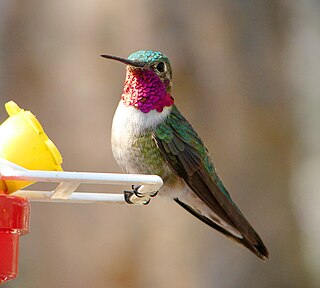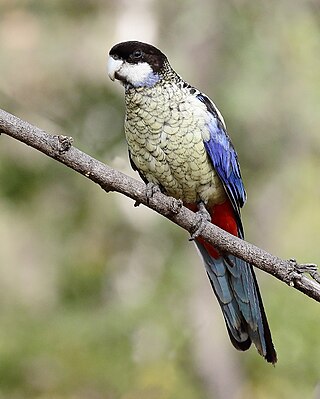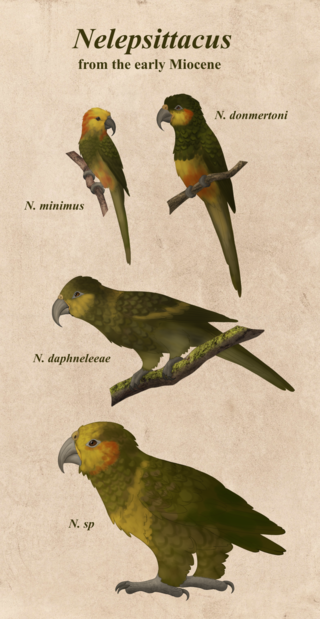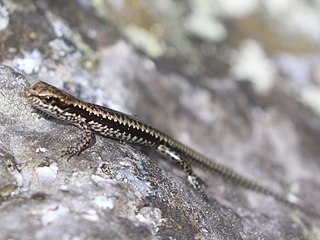Related Research Articles

Platycercinae is a subfamily of birds belonging to the family Psittaculidae that inhabit Oceania. It consists of two tribes, the ground parrots and allies (Pezoporini) and the many species of broad-tailed parrot (Platycercini).

A broad-tailed parrot is any of about 35–40 species belonging to the tribe Platycercini. The members of the tribe are small to medium in size, and all are native to Australasia, Australia in particular, but also New Zealand, New Caledonia, and nearby islands.

The red-rumped parrot, also known as the red-backed parrot or grass parrot, is a common bird of south-eastern Australia, particularly in the Murray-Darling Basin.

Eulamprus is a genus of lizards, commonly known as water skinks, in the subfamily Sphenomorphinae of the family Scincidae. The genus is native to Australia.

The eastern rosella is a rosella native to southeastern Australia, including Tasmania.

The crimson rosella is a parrot native to eastern and south eastern Australia which has been introduced to New Zealand and Norfolk Island. It is commonly found in, but not restricted to, mountain forests and gardens. The species as it now stands has subsumed two former separate species, the yellow rosella and the Adelaide rosella. Molecular studies show one of the three red-coloured races, P. e. nigrescens, is genetically more distinct.

The broad-tailed hummingbird is a medium-sized hummingbird species found in highland regions from western United States and Western Canada to Mexico and Guatemala.

Rosellas are in a genus that consists of six species and nineteen subspecies. These colourful parrots from Australia are in the genus Platycercus. Platycercus means "broad-tailed" or "flat-tailed", reflecting a feature common to the rosellas and other members of the broad-tailed parrot tribe. Their diet is mainly seeds and fruit.

The red-capped parrot is a species of broad-tailed parrot native to southwestern Australia. It was described by Heinrich Kuhl in 1820, with no subspecies recognised. It has long been classified in its own genus owing to its distinctive elongated beak, though genetic analysis shows that it lies within the lineage of the Psephotellus parrots and that its closest relative is the mulga parrot. Not easily confused with other parrot species, it has a bright crimson crown, green-yellow cheeks, and a distinctive long bill. The wings, back, and long tail are dark green, and the underparts are purple-blue. The adult female is very similar though sometimes slightly duller than the male; her key distinguishing feature is a white stripe on the wing under-surface. Juveniles are predominantly green.

Psephotellus is a genus of medium sized Australian parrots. Four species found across the country are recognised, one is presumed to have become extinct.

The Australian ringneck is a parrot native to Australia. Except for extreme tropical and highland areas, the species has adapted to all conditions. Treatments of genus Barnardius have previously recognised two species, the Port Lincoln parrot and the mallee ringneck, but due to these readily interbreeding at the contact zone they are usually regarded as a single species B. zonarius with subspecific descriptions. Currently, four subspecies are recognised, each with a distinct range.

The pale-headed rosella, is a broad-tailed parrot of the genus Platycercus native to northeastern Australia. It is a moderate-size parrot with a pale yellow head, predominantly white cheeks, scalloped black and gold back and pale blue underparts. Two subspecies are recognised, although some authorities consider it to be conspecific with the eastern rosella of southeastern Australia.

The western rosella, or moyadong, is a species of parrot endemic to southwestern Australia. The head and underparts are bright red, and the back is mottled black; a yellow patch at the cheek distinguishes it from others of the genus Platycercus. Adults of the species exhibit sexual dimorphism with the females duller overall; juveniles lack the striking colours of mature birds and the characteristic patterning is not as easily distinguished. Their communication call is a softly delivered pink-pink sound, and much of their behaviour is comparatively unobtrusive. Their habitat is in eucalypt forests and woodlands, where they often remain unobserved until they appear to feed on seeds at nearby cleared areas.

The green rosella or Tasmanian rosella is a species of parrot native to Tasmania and Bass Strait islands. It was described by the German naturalist Johann Friedrich Gmelin in 1788, and named on the mistaken assumption it came from New Caledonia. At 14.5 in (37 cm) long it is the largest species of the rosella genus, Platycercus. Two subspecies are recognised. The green rosella's underparts, neck and head are yellow, with a red band above the beak and violet-blue cheeks. The back is mostly black and green, and its long tail blue and green. The sexes have similar plumage, except the female has duller yellow plumage and more prominent red markings, as well as a smaller beak. Juvenile and immature birds have predominantly green plumage.

The northern rosella, formerly known as Brown's rosella or the smutty rosella, is a species of parrot native to northern Australia, ranging from the Gulf of Carpentaria and Arnhem Land to the Kimberley. It was described by Heinrich Kuhl in 1820, and two subspecies are recognised. The species is unusually coloured for a rosella, with a dark head and neck with pale cheeks—predominantly white in the subspecies from the Northern Territory and blue in the Western Australian subspecies hillii. The northern rosella's mantle and scapulars are black with fine yellow scallops, while its back, rump and underparts are pale yellow with fine black scallops. The long tail is blue-green, and the wings are black and blue-violet. The sexes have similar plumage, while females and younger birds are generally duller with occasional spots of red.

The blue-winged parrot, also known as the blue-banded parakeet or blue-banded grass-parakeet, is a small parrot found in Tasmania and southeast mainland Australia. It is partly migratory, with populations of blue-winged parrots travelling to Tasmania for the summer. The parrot is sexually dimorphic – the males have more blue on the wings and a two-toned blue frontal band on the head, while females are duller and have more green on the wings and a wingbar. Both sexes have predominantly olive-green plumage. Predominantly a feeder on the ground, the blue-winged parrot mainly eats seeds of grasses. It adapts readily to captivity.

The Norfolk parakeet, also called Tasman parakeet, Norfolk Island green parrot or Norfolk Island red-crowned parakeet, is a species of parrot in the family Psittaculidae. It is endemic to Norfolk Island.

Nelepsittacus is a genus of extinct New Zealand parrots that is closely related to the genus Nestor. It consists of four species, of which three have been named so far. The species are all known from the early Miocene Saint Bathans Fauna from the Lower Bannockburn Formation in Otago in New Zealand.

New Zealand is geographically isolated, and originally lacked any mammalian predators, hence parrots evolved to fill habitats from the ground dwelling kākāpō to the alpine dwelling kea as well as a variety of forest species. The arrival of Māori, then European settlers with their attendant animals, habitat destruction and even deliberate targeting, has resulted in their numbers plummeting. Today one species is on the brink of extinction and three other species range from Vulnerable to Critically Endangered, all impacted by invasive species. Further parrot species were not introduced by acclimatisation societies, but occasional releases, both deliberate and accidental, have resulted in self-sustaining populations of some Australian species. New Zealand was identified among the highest priority countries for parrot conservation in the world, due to its parrot diversity, endemism, threats, and having more threatened parrot species than expected.

Concinnia is a genus of skinks in the subfamily Lygosominae.
References
- 1 2 name: Violania Jobling, J. A. (2018). Key to Scientific Names in Ornithology. In: del Hoyo, J., Elliott, A., Sargatal, J., Christie, D.A. & de Juana, E. (eds.) (2018). Handbook of the Birds of the World Alive. Lynx Edicions, Barcelona.
- ↑ Shipham, Ashlee; Schmidt, Daniel J.; Joseph, Leo; Hughes, Jane M. (October 2015). "Phylogenetic analysis of the Australian rosella parrots (Platycercus) reveals discordance among molecules and plumage". Molecular Phylogenetics and Evolution. 91: 150–159. doi:10.1016/j.ympev.2015.05.012. ISSN 1055-7903. PMID 26021439.
- ↑ "Subspecies Platycercus (Violania) Wells & Wellington, 1992". Australian Faunal Directory . Department of the Environment and Energy. Retrieved 23 October 2018.